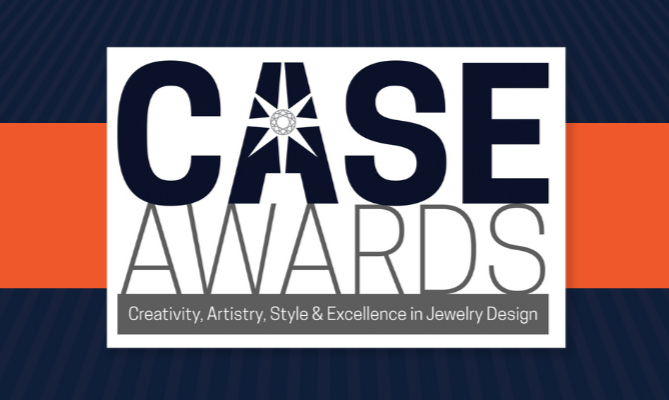
Grading reports are meant to provide clarity about the specifications of diamonds and gemstones. A grading report can help explain the quality factors like color, clarity, cut and carat weight.
While grading reports provide detailed insight into the gem, it should not be the primary factor when deciding on the stone you purchase. Visiting professional jewelry stores with gemology experts on staff to compare diamonds in person and understand their unique characteristics will help you determine the best diamond or gemstone for your budget..
Grading Report or Certificate or Appraisal?
Let’s start with what a diamond or gemstone grading report is not: it is not a jewelry appraisal or a certificate of the stone’s value. Key differences:- A jewelry appraisal is typically used for insurance purposes and any after-purchase care or design follow up. It should not be used as a substitute for a grading report.
- A certificate guarantees the exact grade or value of the stone, while a grading report is a subjective report and offers a grade within a range of values.
Consider a grading report a blueprint of a diamond or gem’s properties that verifies its authenticity and quality. As you search for your perfect diamond or gemstone, a grading report can help explain the quality factors of the stone based on scientific properties; however, it is still subjective in that it is the opinion of the individuals who graded the diamond or gemstone and is based on the specific lab’s grading standards. This is why there are sometimes discrepancies between grading reports from different labs..
What is Included with a Grading Report?
A grading report describes in detail the characteristics of an unmounted diamond or gemstone. How that information is referenced varies depending on the lab but most grading reports contain :- Grading results, also referred to as the 4Cs of diamond quality: color grade, clarity grade, cut grade and carat weight. The grading scales will differ slightly for colored gemstone grading reports, where color is the most valued quality factor
- The stone’s characteristics: shape, proportions, finish, polish
- Any known treatments
- Light performance: measuring the brilliance, fire, scintillation, or fluorescence (a diamond’s intensity under long-wave UV light) of the stone
- Many grading reports also include a plotted diagram of inclusions and blemishes that can affect how light is displayed. This is another area where colored gemstone grades differ because almost all gemstones have some inclusions. When considering diamond inclusions, keep in mind that truly flawless diamonds are extremely rare, representing less than 1% of all finished diamonds.
Industry standards recommend updating reports every five years. A diamond grading report can be a document of identification in the event of loss or theft.
Jewelry stores you can trust, like members of Jewelers of America, have gemological experts or gemologists on staff who understand the possible variances and subjectivity inherent in diamond and gemstone grading. They value transparency and can clearly explain the grading report.
Typically, grading reports are not commonly issued for smaller stones or antique and vintage pieces. Larger or custom jewelry pieces, such as engagement rings, will usually come with a grading report.
Who Publishes the Grading Report?
Diamond and gemstone grading reports are provided by laboratories within the jewelry industry. The following organizations are respected labs within the industry that offer diamond and gemstone grading reports or certificates:Gem Certification & Assurance Lab
Gem Certification & Assurance Lab, Inc. (GCAL) offers a unique suite of certification, identification, valuation and forensic services for natural and lab grown diamonds, gemstones and jewelry. GCAL’s mission is to provide the most accurate and consistent gemological services with uncompromising integrity and unparalleled customer care. Every diamond is precisely measured, analyzed, photographed and Gemprinted, thoroughly grading it to the highest standards.
Gemological Institute of America
The Gemological Institute of America (GIA) offers Diamond Grading Reports and the GIA Diamond Dossier, (a more compact report for diamonds less than 2 carats). As the global authority on diamonds and gemstones, GIA established the Diamond 4Cs and the International Diamond Grading System™ in the mid-1950s. To avoid fraudulent reports, all GIA reports contain security features such as a hologram, security screen, microprint lines and a unique GIA report number.
Gemological Science International (GSI)
Gemological Science International (GSI) is the only major gemological organization established in the 21st century, founded in 2005 in New York City. Today, it is one of the largest gemological entities in the world. Utilizing cutting-edge processes, proprietary technologies and a commitment to the highest ethical practices, GSI is a global leader in natural diamond and lab grown diamond jewelry certification. They also provide manufacturers and retailers a wide range of gemstone identification and grading services.
EGL USA
EGL USA offers comprehensive reports for diamonds, colored diamonds, colored gemstones, pearls and mounted jewelry. The lab identifies treatments and enhancements and issues distinct reports for lab grown and enhanced diamonds, as well as those reviewed for light performance and cut grade. EGL USA reports are protected by extensive security features. Diamond Report numbers can be checked on their official website..
International Gemological Institute (IGI)
International Gemological Institute (IGI), founded in 1975, offers reports on diamonds and colored stones, as well as appraisals, diamond authentication and information on gemstone origins. IGI reports include all the same categories as GIA reports, as well as a Clarity Scale and Color Scale so you can see how your diamond measures against diamonds of varying clarity and color.
Is the Grading Report Legitimate?
Jewelers with a training in gemology are uniquely qualified to obtain a grading report from an established industry lab and explain its contents. Here are some things to consider when concerned about the legitimacy of a grading report.Is the price too good to be true?
If the price is much lower than other diamonds or gemstones for the same grade on the market, you should proceed with caution. Just as with a quality car or fine leather handbag, you are not going to get a good- to high-quality ring for a significant price break.
Is the lab independent?
It's important that the diamond or gemstone grading report is produced by an independent lab that doesn't have a stake in the stone's price or profit. Make sure the grading lab is independent of diamond and gem suppliers, mines or retailers.
Did more than one grader work on the report?
A legitimate grading report will use a process wherein multiple graders evaluate an individual diamond or gemstone separately. This way, because no two diamonds are exactly alike and determining the value of their qualities is somewhat subjective, the grade is established by a consensus and not one individual's opinion.












